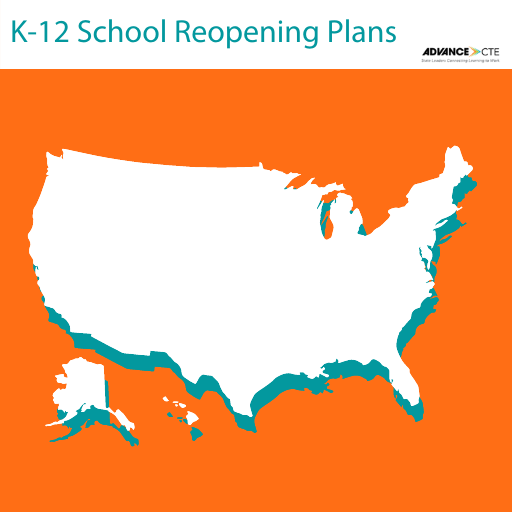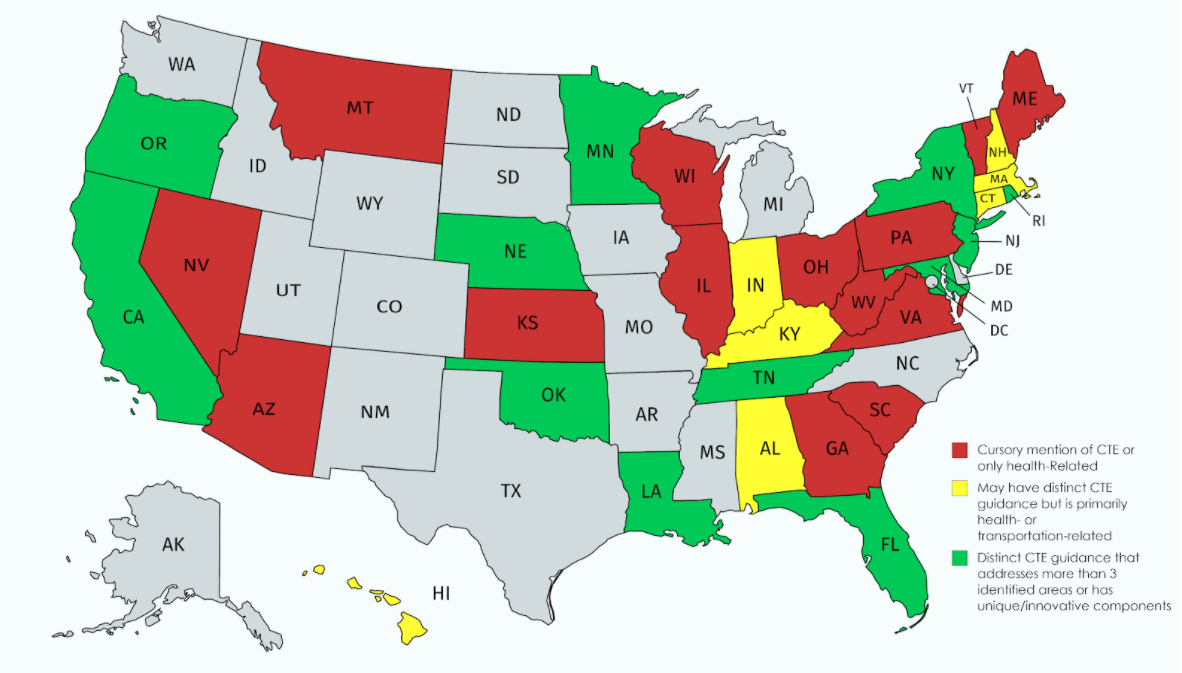 As schools begin to reopen and learners begin their classwork nationwide both virtually and in-person, the health and safety of students remains at the forefront of educators’ and administrators’ minds. Throughout the summer, state educational agencies (SEAs) published school reopening guidance to help schools make informed decisions about the best course of action for their students and school community while maintaining safe practices. Whether continuing to educate virtually or in-person, these guidelines are as varied as the local plans that implement them.
As schools begin to reopen and learners begin their classwork nationwide both virtually and in-person, the health and safety of students remains at the forefront of educators’ and administrators’ minds. Throughout the summer, state educational agencies (SEAs) published school reopening guidance to help schools make informed decisions about the best course of action for their students and school community while maintaining safe practices. Whether continuing to educate virtually or in-person, these guidelines are as varied as the local plans that implement them.
Considering the varied nature of these plans and the special circumstances that often underlie the logistics of implementing Career Technical Education (CTE) for a school district or throughout a region, Advance CTE tracked school reopening plans for each state and analyzed how they implicated CTE. The tracker that resulted can be found here. As of writing, 33 states’ reopening plans mention CTE in any way, including cursory mentions or health- or sanitation-specific guidance (see figure 1). Of those 33, 12 have robust CTE-specific guidance either embedded in their state reopening plan or as a separately published document. While each of these warrants viewing and merits discussion, we have chosen four plans to highlight due to their breadth or depth or because they have an innovative element that distinguishes their plan from others. While these highlighted plans are not the only examples of strong CTE-specific guidance, they can serve as models for other state agencies looking to further develop guidance of their own as schools continue to reopen and local education agencies (LEAs) continue their transition to in-person education.

Figure 1. (Last updated 8/24)
Minnesota
Minnesota’s state reopening guidance (last updated 8/21; CTE guidance on pages 95-101) provides comprehensive information about CTE throughout the state including guidance for classroom/laboratory instruction, work-based learning, career development and advising and career and technical student organizations (CTSOs). It also provides links to dozens of resources that are program-specific or unique to a particular program.
New York
New York’s state reopening guidance (last updated 7/16; CTE guidance on pages 103-108) provides similarly robust information across a variety of CTE topics. Beyond content and delivery and CTSO guidelines, this reopening plan also includes information about industry partnerships, guidelines for students with disabilities and standards for program approval, Perkins V and other data reporting.
Nebraska
Nebraska’s CTE-specific guidance (published 8/4) provides guidance and guidelines for special classroom settings unique to CTE as well as general CTE guidance. They utilize “Guiding Principles of Nebraska CTE” (included within) to inform the document. Further, the setting-specific guidelines are delineated based on the reopening status of the state, which provides for flexibility across time.
Tennessee
Tennessee’s CTE-specific guidance (published 7/15) provides in-depth guidelines not only for all areas of CTE, but also for how content is delivered (in-person, hybrid or virtual). Their plan draws from the Association for Career Technical Education (ACTE)’s High-quality CTE: Planning for a COVID-19-Impacted School Year (published in June), which asks guiding questions to ensure all considerations are discussed when undertaking school reopening at the local levels.
Finally, Advance CTE has its own guiding questions in the workbook Prioritizing CTE Through and Beyond COVID-19 that can be utilized by those at the state level to help employ quality and equity principles throughout reopening strategy. Additional resources can be found on our COVID-19 resources page.
Dan Hinderliter, Policy Associate
